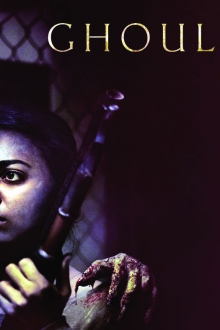Netflix and Amazon Prime Video are coming up with a higher dose of Indian and international content this month for avid watchers.
Mughal influence can be seen in Rahul Mishra’s designs at the India Couture Week. This writer catches up with the designer and talks about his creations.
Spectacularly decorated with an assortment of leaves, the stage looked elegant as it took on the appearance of an eternal heavenly garden where princes and princesses would walk around. With oodles of nature, glamour and splendour, designer Rahul Mishra showcased his collection at the India Couture Week 2018 on the fourth day.
The idea behind the lush greenery on stage was based on Maraasim
(relationships in Urdu) and explored the connection between nature and man-made architecture, traditional and modern, according to Rahul. He said, “My idea is that when you create a man-made structure, is there a way that you can bring an element of nature in it?”
While other designers focus on glamour, art and rhetoric, the style-statement for Rahul was, “the cross-pollination of ideas that resulted in entirely unique and unified aesthetic expressing a genuine delight in the creation of beauty,” since nothing could be created in isolation. The theme also reflected the Mughal aesthetics, which he said was not an invention of any single artist, nor any particular group of artists. “It was a blend of art practices from Persia, European influences and the rich indigenous Indian traditions,” said he.
His designs were an amalgamation of Mughal designs and florals, which extended to menswear as well and he explained, “I tried to simplify the graphic rather than over-do it. Sometimes it is great to follow gender-neutral trends and ideas for your designs.”
From zardozi to aari, Kashmiri embroidery, tile-work, inspired from the tomb of Asif Khan and some from the Taj Mahal, Rahul’s designs defined elegance and reminisced history.
With this collection, he applauded the craftsmanship and the artists that worked on it and said, “Many of the pieces were done at my studio, but around 80 per cent of the craftsmen were in their villages. Some of them even live in the slums of Mumbai and by employing them I feel, they can also improve their and their family’s lot.”
Rahul explains his idea of an ideal bride and his designs that follow a 100 percent sustainable approach, “She is extremely intelligent, very well-travelled, and doesn’t get impacted by the sea of influences around her. She is very strong-headed and inspires me the most. She challenges conventionality and is the one who creates a new look, a new role for herself. She also recycles everything what she creates so beautifully. Her idea is to re-invent, re-create and re-wear alehenga which would otherwise lie in her wardrobe.” For Rahul, fabrics are important for designing, “For me, textiles have always been a starting point and an inspiration. Ultimately, the designer makes the two dimensional fabric look 3D. It is almost like a canvas for me. But as a designer, the beauty is that you have so much variety and beauty in every fabric that the innovation comes out in each. The result is so beautifully unique each time.”
The collection collaborated with Swarovski, to replicate tender features of a dewdrop. The designer experimented while designing and revealed, “A lot of new elements like Swarovski crystals were used. The experiments extended to the shapes where I tried a lot of layering. The blouses had two-three layers and the dupatta was draped differently, sometimes even like a shrug. On top there was an over-layering of the blouse.
“We did play a lot with styles and designs. In this process, the idea was to create a new version in terms of how people can perceive fashion and how they can wear same kind of things differently. Initially, the first pieces are all about showcasing lehengas, which can be worn with a jacket or a shrug, which looks different. Hence, my designs are about exploring possibilities,” he added.
Writer: Pioneer
Courtesy: The Pioneer








 OpinionExpress.In
OpinionExpress.In















Comments (0)